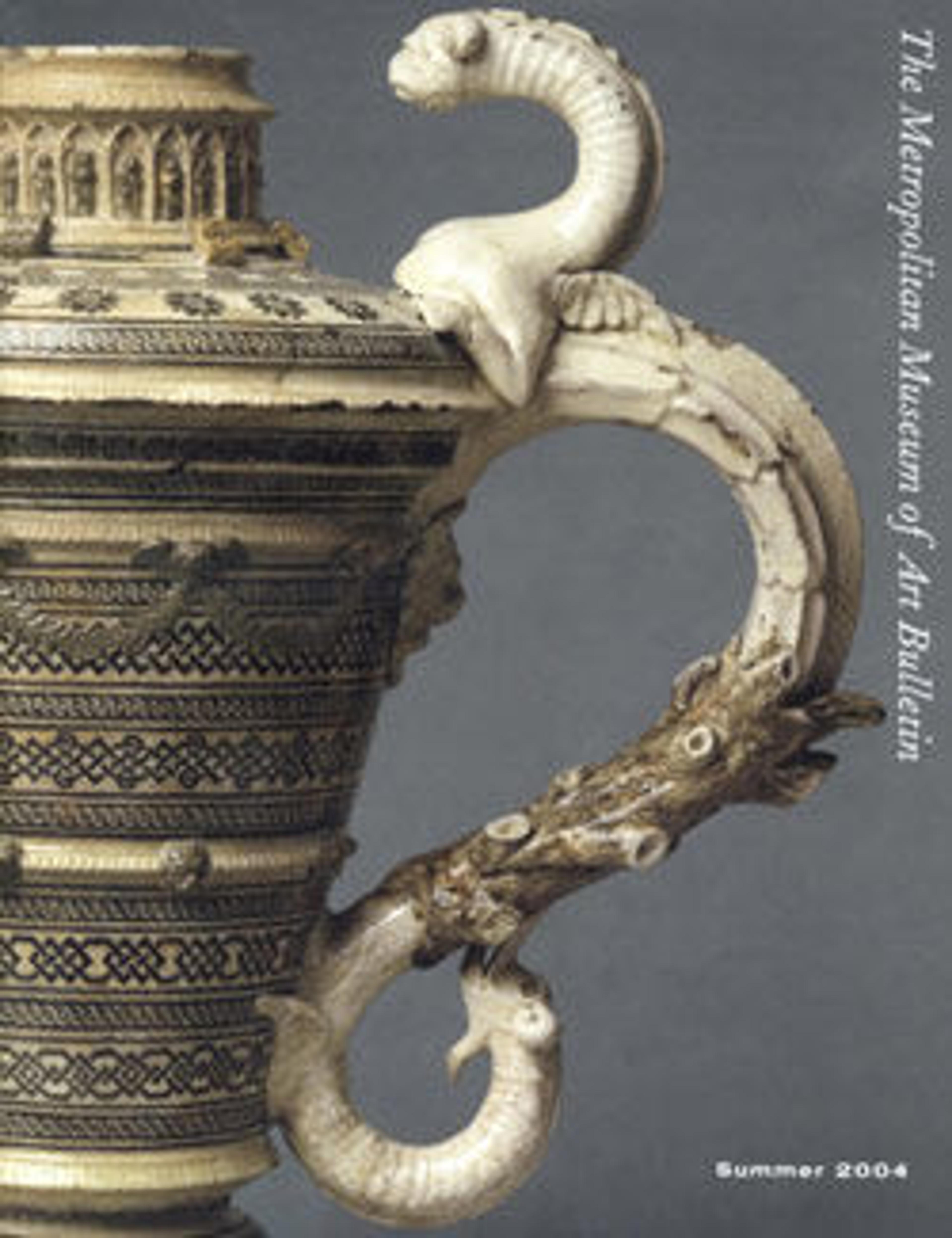Figure personifying a spring
This polychrome-glazed earthenware "gondola" cup was probably modeled by Guillaume Dupré, following the sculptural style of Bernard Palissy. The design and spirit of the "gondola," a contemporary term for this ceramic type of a woman in a bath, suggest it was intended to be decorative rather than utilitarian. Employing Palissy's saturated color glazes, textured waves, and shell-like lobes, the piece also hints at the erotic nature of court art through its high-relief rendering of the nude female figure. The partly submerged woman personifying a spring was a popular theme at the court of Fontainebleau, itself named after a local water source, which numerous potters imitating Palissy's style in the nearby village of Avon frequently employed. Palissy himself, known principally for his innovative rustic ceramics, demonstrated an interest in this motif through his numerous works bearing representations of water. In the first decades of the seventeenth century, "gondola" cups were also made in silver, silver gilt, amber, crystal, enamel, and natural shell.
Artwork Details
- Title:Figure personifying a spring
- Modeler:Model probably supplied by Guillaume Dupré (French, 1579–1640)
- Maker:Probably made in the pottery at Avon of Claude Bertélemy (French, 1525–1626)
- Date:modeled ca. 1600–1610, ca. 1620–25
- Culture:French, Fontainebleau or Avon
- Medium:Lead-glazed earthenware
- Dimensions:3 3/16 × 4 15/16 in. (8.1 × 12.5 cm)
- Classification:Ceramics-Pottery
- Credit Line:Gift of Julia A. Berwind, 1953
- Object Number:53.225.54
- Curatorial Department: European Sculpture and Decorative Arts
More Artwork
Research Resources
The Met provides unparalleled resources for research and welcomes an international community of students and scholars. The Met's Open Access API is where creators and researchers can connect to the The Met collection. Open Access data and public domain images are available for unrestricted commercial and noncommercial use without permission or fee.
To request images under copyright and other restrictions, please use this Image Request form.
Feedback
We continue to research and examine historical and cultural context for objects in The Met collection. If you have comments or questions about this object record, please contact us using the form below. The Museum looks forward to receiving your comments.
